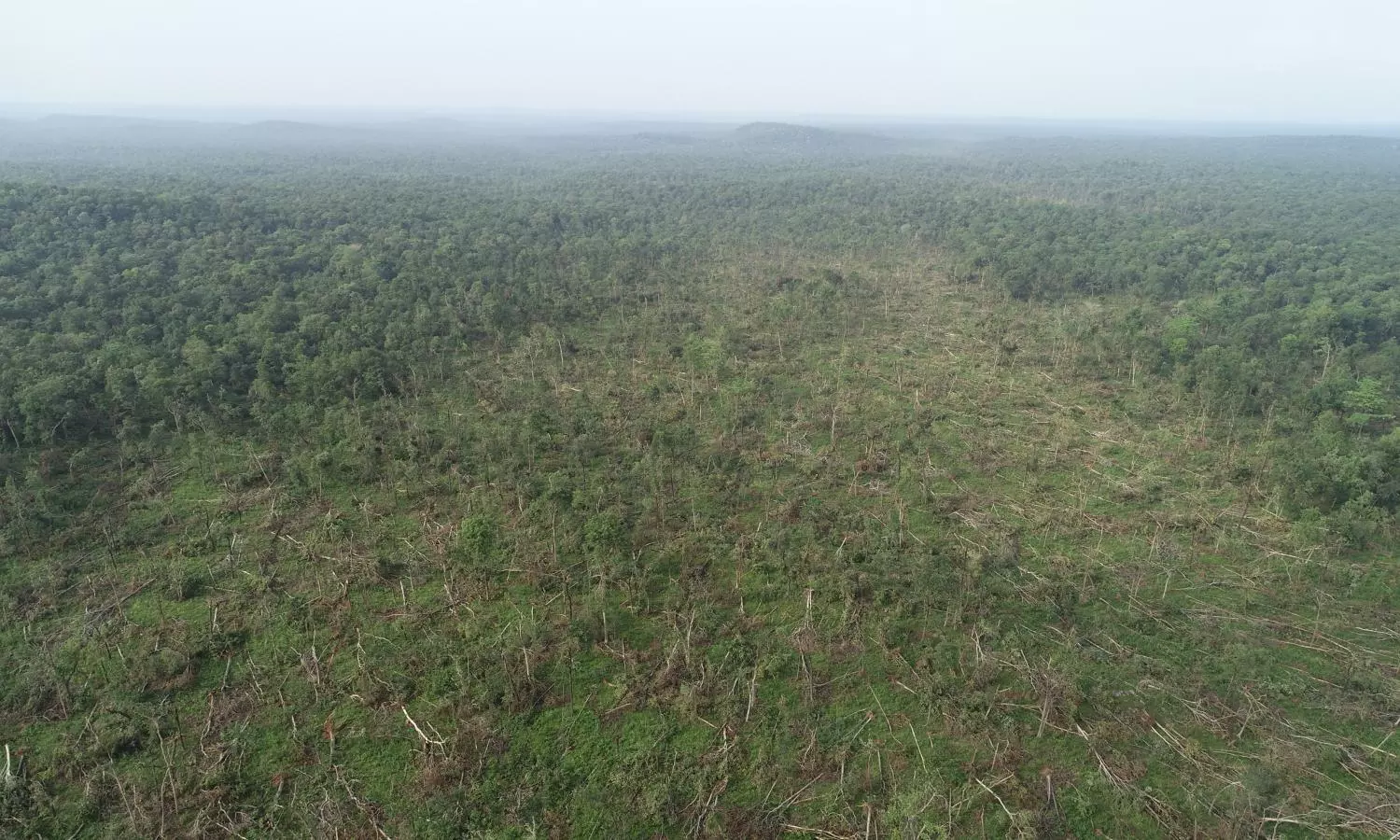Cyclone Collision Caused Massive Tree Damage in Mulugu

Hyderabad: A rarest of rare weather phenomenon — the collision of two cyclones — has been found to have caused the August 31 flattening of trees in the Eturnagaram wildlife sanctuary in Mulugu district. The cyclones had caused heavy rain and flooding in the state.
Around 50,000 trees spread over some 332 hectares were either uprooted or flattened, with many trees also having their crowns blown off leaving their trunks and stumps standing when the weather incident occurred.
The forest department which on Tuesday conducted a workshop to understand just what had happened found that winds of up to 140 kmph blew through a part of the forest in Tadvai mandal when two weather systems – a cyclonic circulation that orginated over the Bay of Bengal and another that developed over the Arabian Sea —collided into one another over the Chatthisgarh and Karnataka, resulting in shear zones in the atmosphere.
The moisture-laden heavy clouds with the clashing winds were pushed down closer to the ground airmass, it resulted in a sudden heavy downpour and severe cyclonic speed winds resulting in destruction of the forest patches, Mulugu district forest officer Rahul Jadhav informed the workshop, according to a news release from the department.
The severe cyclonic condition over land was an extremely rare phenomenon, with very few, if any, comparable events that occurred in the country earlier. The resulting high speed winds flowed furiously and in straight lines but only for short duration till the accumulated energy in the storm system was dissipated.
One of the reasons for the trees getting uprooted was the nutrient rich soil in the forest which meant the root systems of the trees, even the larger ones, were shallow which were not enough to anchor the trees strongly in the earth, the workshop was informed.
Principal Chief Conservator of Forests R.M. Dobriyal said the affected forest patches must be protected from human interference, and people should not be allowed to take their cattle or other animals for grazing there. Special attention must be placed on protecting wildlife using the affected areas, and it must be ensured that the now open forest patched do not fall victim to growth of weeds which could affect fresh tree growth.
Among those who attended the workshop, chaired by were senior officials from various wings of the forest departments, and scientists from the National Remote Sensing Centre, and the National Geophysical Research Institute in Hyderabad, the National Atmospheric Research Laboratory in Tirupati, and the Indian Meteorological Department.
Conclusions over the weather phenomenon that occurred over the Mulugu district forest were arrived at based on data from these scientific institutions, the release said.
The NRSC was represented by M.V. Ramana, NARL by Dr Amit P. Kesarkar and Dr Tanvi Arora and Shakeel Ahmed from the NGRI. IMD official Dr K. Nagaratna joined the workshop through video conferencing.
Among the senior department officials were Chief Wildlife Warden Elusing Meru, PCCF (CAMPA) Dr C. Suvarna, and PCCF (Admn) Sunita Bhagwat, the release added.

